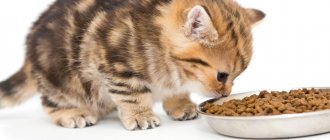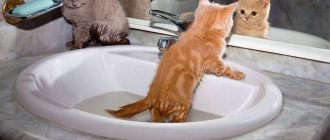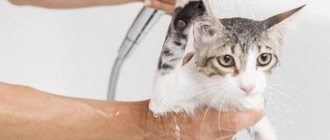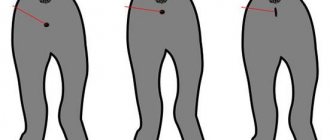Kittens really don't like water treatments. For them, water is associated with something scary and unpleasant. But no one canceled washing, because this is the key to cleanliness and health. It is better to accustom your kitten to water from an early age. So, he will get used to the procedure and love bathing. But in order for this process to take place in peace and comfort, you should take care of the bathing rules in advance. So how to wash a kitten correctly?
The advisability of bathing
Many people do not understand why bathe a kitten if nature has endowed it with a rough tongue with which it washes itself. Of course, a rough tongue helps kittens take care of their fur and remove small particles of dirt from their bodies. Kittens can spend several hours licking themselves. And this is justified. After all, wild cats carefully lick themselves before the hunt to obscure their own scent. So, hunting brings results.
Why are kittens afraid of water? It is known that cats are heat-loving animals. But when their fur coat, which protects them from the cold, gets wet, the kittens lose their ability to retain heat and freeze. Pets that are always warm and have weakened immune systems begin to get sick. Also, an inappropriate choice of shampoo will result in allergies, dry skin, hair loss and brittleness for the kitten.
Some especially love to swim and get into the water themselves, but this happens in rare families.
Then in what cases should you bathe a kitten?
- The fur was covered with a greasy coating.
- Accumulations of dirt and stickiness are visible on the skin.
- Wool has an unpleasant odor.
- Fleas.
- If the kitten is very dirty and licking becomes dangerous.
- If a purebred kitten has no fur.
Preparing a cat for a bath
Fish for cats - examples of what is and is not possible
Preliminary preparations include:
- nail trimming;
- combing and trimming clumps of stray hair;
- selection of a suitable place - for large individuals a bath is suitable, for children - a basin or washbasin;
- removing all foreign objects - washcloths, cans of hair and skin care products.
Special shampoo for cats
To wash an animal you will need:
- cat zoo shampoo;
- cotton swabs or a special cap covering the ears - used for all breeds, including Scottish Fold;
- soft sponge - for the head;
- large terry towel - for drying after a bath;
- a small towel - for final drying of the wool.
Preparing the owner for bathing the pet
Experienced breeders advise carrying out hygiene measures together - this makes it easier to cope with possible resistance from the pet.
To wash the cat, one will have to hold the animal, the second will do the soaping and rinsing off the foam. Owners do not need special training, but when washing cats that are aggressive and hate water, you can stock up on antiseptic and adhesive tape to disinfect scratches.
Contraindications to bath procedures
There are also contraindications in which bathing a kitten is strictly prohibited. In such cases, it is better to wipe the coat from above with a damp cloth.
- Quarantine and vaccination. If your kitten is undergoing a two-week quarantine or has already been vaccinated, do not bathe him under any circumstances until this period is over.
- Lichen. A dangerous disease that concentrates in one place, and if you completely bathe the kitten, it can spread throughout the entire skin.
- Illness and operations. If your little pet is sick, no matter what disease, it is better to refrain from bathing until he has fully recovered.
- Stress. During times of stress, it is better not to expose the kitten to even greater stress, otherwise the small animal’s nervous system will definitely not be able to withstand it.
Have pity on your pet and do not expose it to even greater danger.
At what age can you bathe a kitten?
Veterinarians do not recommend bathing a kitten until 3 months old, since during this period their skin glands are just forming. If the protective secretions are washed off from the skin, the kitten may develop dermatitis. In the first month, the kitten is calmly licked by its mother. Subsequently, he learns to do it himself and this will be enough for him.
Already after three months of age, if the kitten knows its owners and trusts them, you can bathe the animal for the first time. You don’t have to put this procedure aside. It is better for a kitten to get used to water at an early age.
If a kitty or cat has gotten very dirty, but they have not yet learned to lick themselves, you can wipe the dirty areas with a damp cloth.
Begin washing with awareness and confidence so that your cat feels your love for him.
Water procedures: economy option
It happens that there is no need to bathe the whole pet, but only certain parts of the body need to be tidied up. Here's how to do it:
- ears are cleaned with cotton pads and a special ear lotion;
- the muzzle - with cotton pads, and the chin - with zoo shampoo;
- butt - with wet wipes;
- nose - with a paper napkin;
- paws (after using the toilet or walking) - with water in the washbasin;
- eyes - with wet disks, and if they are watery - with cotton wool dipped in freshly brewed tea.
Bathing frequency
But you shouldn’t immediately run out and wash your pet almost every day. Such a frequent procedure will not benefit the kitten. With frequent bathing, the coat deteriorates and the skin becomes dry.
Domestic kittens should be washed 2-4 times a year. For example, you can wash your pet once every quarter (3 months).
If your kitten goes for walks outside, or you go out with him periodically, then after each walk you should definitely wash his paws. Well, general bath procedures should be carried out 6-10 times a year.
For hairless kittens, bath procedures are considered almost the basis of everything. Since their skin is not protected by fur, it secretes a secretion that quickly begins to spread an unpleasant odor, and such kittens get dirty faster. Therefore, such kittens are washed approximately once a month.
Also, veterinarians recommend bathing a kitten once in winter and autumn, and twice in spring and summer.
Do not neglect the health of your pet; take washing with great responsibility. The main thing is not to go through this procedure frequently.
Precautionary measures
Bathing, like any other procedure, requires compliance with safety rules (especially when it comes to babies).
During the bath procedure, you should adhere to the following recommendations:
you should not bathe your pet after eating - this will negatively affect the digestion process, and the reward offered after the procedure will not be so interesting to the kitten;- You should not put your pet in water - the sight of it instantly stresses out the cat, it is better to place it in an empty container and gradually add water;
- To avoid panic, do not pour water on the muzzle and ears, lather them and immerse them in water.
The owner should take precautions for himself if the pet scratches or even bites during the procedure.
Latex gloves or oven mittens (those usually used in the kitchen) will help protect your hands from injury.
How to prepare for washing
Before starting bath procedures, it is important to prepare in advance for such a serious event. The main thing when washing a kitten is not to scare it, so that it does not experience unpleasant sensations when it comes into contact with water.
General recommendations to follow include:
- Close the door tightly and avoid drafts.
- Trim your pet's nails and brush them beforehand.
- To begin, add water 10 cm from the bottom. Then add, but not above the shoulders.
- The water temperature should be between 35-40 degrees.
- Do not bathe your kitten immediately after eating. About 4 hours must pass before you can take bath procedures.
The main thing is that the fluffy does not participate in the preparatory process.
Most of all, kittens are afraid of the sound of water from a tap or shower. Therefore, it is not recommended to turn them on while your pet is near you.
Selection of hygiene products
There is a huge selection of pet wash products on the market. Such shampoos are distinguished both by skin type and consistency. But kittens need gentle products and they need products that are specifically designed for them. It is worth consciously approaching the choice of shampoo with which you will wash your kitten.
- Liquid shampoos will make your kitten's fur soft and fluffy. This product foams quickly, so only a small amount of shampoo is needed.
- Dry shampoos are not used with water, so the kitten must be dry. Shampoo is applied to the skin and combed off along with the dirt.
- Sprays are also used on dry skin.
- Special shampoos are aimed at combating problems and have the desired effect. Such shampoos fight parasites, and there are also medicinal ones for damaged kitten skin.
Never use the shampoos that we humans use to wash our hair. For animals, such products are very aggressive.
Inventory
Prepare in advance everything you will need when washing your kitten.
- Veterinarians do not recommend bathing kittens in the bathtub as it is too big for them. It is better to prepare a special bath for bathing children and a ladle.
- Towels and rags. You will need towels to dry the kitten after the bath, and place a rag on the bottom of the bath to make it more comfortable for the kitten to stand.
- Place shampoo, small washcloths, and toys next to the basin.
- To protect your head and ears, you can purchase special hats and earplugs.
- For calm incubation of all procedures, you can buy a special net for bathing for the kitten. This way he won’t run away and won’t scratch you.
With such a combat set, you will definitely be 100% ready to bathe your pet. Just don’t forget to call someone for help to be on the safe side. Washing your pet is much easier with two people.
There are special caps for washing kittens, nets and fastenings.
Choice of product
For little fluffies, you usually buy shampoo with a liquid consistency.
It is important not only to bathe the kitten correctly, but also to choose the right shampoo for it. According to consistency, hygiene care products are of the following types:
- Liquid. Most often used. These are special pet shampoos and conditioners that clean the coat of dirt and make combing easier.
- Powdery. They are preferred by cat owners who are afraid of water to the point of panic. The powder effectively removes remaining dirt and secretions, but the product is not suitable for kittens with dark fur coats.
- Sprays. After application, all contaminants are easily removed, in addition, the product helps fight tangles.
Bathing a kitten - how the procedure works
The most common bathing is done with liquid shampoo, so use that. How to bathe a kitten correctly and without harm:
- Place the kitten in a bath that is already filled with water at about 40 degrees. The kitten must reach the bottom and not drown. Grab the kitten by the scruff of the neck. So, he will not have the opportunity to flounder and scratch. Calm the baby, talk to him, praise him.
- First, wet his fur with a ladle. Do not wet your ears and head - it is better to avoid getting water in these places. You can take a shower instead of a ladle, but only if the kitten is not afraid of the stream that runs from there.
- Pour a small amount of shampoo onto your hand and rub between your palms. It is important that the foam has already formed on your palms, this makes it easier to apply it to the wool. Apply shampoo to the back, paws, tummy, and tail. Don't touch your head or ears.
- Take a washcloth designed specifically for your pet and gently soap your cat. Distribute the foam in all places. Pay special attention to the pads on the paws, genitals, armpits, chin, neck. A lot of dirt accumulates in these places, because they are difficult for the kitten to reach. Wash off dirt thoroughly.
- The most unpleasant thing is washing your hair, so we postponed this item to the very last. Using a washcloth, gently wet your head and ears.
Carefully! Water should not get into the eyes and ears, as the pet may experience inflammatory processes.
- Lather your hair, also carefully, massage lightly. You only need a little foam on your head.
- Now you can wash it off. Using a shower or a ladle, water the kitten from top to bottom, that is, from head to tail. There should be no foam left, all fur should be clean, otherwise the kitten may be poisoned by hygiene products when licking itself.
- Place the kitten in a warm, terry towel. Let him warm up a little in this towel. Take a second towel and blot all areas so that no water remains.
How to wash specific body parts
Treat your cat kindly while washing your cat.
Sometimes a cat needs a partial bath. Perhaps the pet got dirty after eating, accidentally got into the mud, or did not take care of its fur very carefully after using the toilet. Partial washing can be done in a bathtub or basin.
Prepare your cat. Gently remove sticky dirt and dry debris with your hands or a comb. Matted tangles can be carefully cut off with scissors. In the same way, soiled fur from the anus is removed.
If you need to wash the tail and paws, fill a basin with some warm water and dilute shampoo in it. Place the cat in the container and, holding it with one hand, wash the contaminated areas with the other.
A dirty muzzle or collar can be washed with warm water with or without shampoo. Wrap the cat in a thick fly towel so that the head and chest are outside. Wet the contaminated areas with warm water and diluted shampoo, rub with your hands, and then rinse with clean water from another ladle. This technique allows you not to wet the clean fur and not irritate the cat.
Smooth-haired cats can be wiped with a damp cloth instead of washing.
This procedure removes lost hairs, removes minor dirt, while maintaining a normal fat film on the coat. Use soft cotton cloths or specially made terry cloth mittens.
After bathing, do not try to dry your cat with a hairdryer.
It is convenient to wash an adult cat in a bathtub or shower tray. It is better to bathe a small kitten in a shallow basin, placing it on the table.
While washing, treat your pet kindly, talk to him, trying to calm him down. Do not be outraged if the animal meows or hisses. It is a rare cat that tolerates bathing calmly and unperturbed.
Don't try to blow dry your cat. Dogs react calmly to a noisy household appliance, but cats simply cannot stand it.
If your cat tries to jump out of the bathtub, place her with her back to you and her face to the wall. Seeing no way out, the pet will behave calmer. Close the bathroom door to prevent your cat from escaping.
After washing, you can carry out other hygiene procedures. Rub your cat's eyes with an antibacterial cleansing lotion. Check your ears and, if necessary, remove the yellowish coating using cotton swabs and a special liquid.
How to bathe correctly for the first time
It is important that after its first wash the kitten has only pleasant memories. Therefore, carry out your bath procedure in comfort and coziness. For kittens who are trying to wash their coat for the first time, you should follow all the rules described above. And also adhere to the following tips.
Cheer up your four-legged friend.
- Introduce the kitten to the bathtub or basin. Show him the tap, the water. Also bring his toys, perhaps he will be calmer with them.
- For the first time, use unscented shampoos.
- It is better to wash a kitten for the first time not alone, but with someone. So, another person will hold and pinch the ears while you wash the kitten.
- Gently soap the kitten with a sponge and rinse off the foam thoroughly.
- Wrap the kitten in a warm towel and sit with it for about 10 minutes. Later, take another dry towel and wrap it again. Place the kitten in a warm place: a bed or a house.
- After washing, treat your purr with something tasty to make him feel better.
How to bathe an adult cat?
If you have not taught your pet to bathe from a young age, then this procedure becomes much more complicated. However, do not think that your attempt is doomed to failure. Below we will present you with tips and recommendations from experienced owners and veterinarians who will certainly answer the question of how to bathe a cat without scratching it.
To bathe an adult animal, use dry or liquid shampoos for cats; in rare cases, it is allowed to use shampoo for people, as well as baby soap.
If the kitten is against
It also happens that a kitten is categorically against any water. Perhaps the kitten has bad memories creeping in, or water for him is an association of something terrible. But in order to solve such a problem, you should show patience and love for your baby.
Before washing, play with the kitten. During the game he will relax a little and get tired. This way he won’t have the strength to fight water wars in the bathtub.
The main thing is not to feed the kitten before the bath procedure.
While you put the kitten in the water, distract him with toys. There is no need to throw the kitten into the water, do everything smoothly and continuously.
If you still fail to wash your kitten, the only solution is dry shampoo or spray. Or wipe the wool with a damp cloth or napkin. So, you will not expose the kitten to water, but simply clean it with dry shampoo.
Do not shout or scold under any circumstances. Talk calmly and kindly to the kitten, praise it, laugh quietly and play.
Special cases
Swimming during vaccination
The information that you should not bathe a kitten during the vaccination period is long outdated. According to American veterinary colleagues, you can bathe even on the day of vaccination. Getting water (rain or splashing in the bathroom) onto the injection site does not cause a local inflammatory reaction, but rubbing the injection site with shampoo on the first day is still not recommended. After vaccination, the optimal period for postponing water procedures is a period of 2-3 days.
Treatment for ectoparasites (fleas and ticks)
First of all, it is necessary to take into account the instructions for the drug, which state how many days it is not recommended to bathe the animal. On average, regarding high-quality drugs, you should not bathe for 2 days. This period is due to the fact that the drug settles in the sebaceous glands, i.e. is localized in the deeper layers of the skin, so when swimming, the protective layer of the medicine is not washed off.
Modern dermatologists advise bathing before treatment against ectoparasites, at least 1-2 days in advance. This is especially true for long-haired cats, because the skin takes longer to dry than the fur. It is not recommended to apply the drug to wet skin due to the risk of developing a local inflammatory reaction.
Castration
It is better to bathe a cat 5-7 days after castration. This interval is necessary for the incisions on the scrotum to heal after castration. You can use dry shampoo or wipe with wet wipes. A humid environment is not conducive to healing; besides, cats are very clean creatures and excess moisture on the fur will stimulate grooming of the animal in the groin area.
Sterilization
After sterilization, it is not recommended to bathe the cat for 10 days. This period is necessary for the stitches to heal completely. In some cases, abstaining from swimming requires a period of 14 days. You can also use dry shampoo or wet wipe treatment.
Bathing a nursing cat
It is better to wait until the kittens are about 3 weeks old and then fearlessly separate the nursing mother for several hours: thoroughly bathe and dry. For bathing pregnant or lactating cats, it is best to use hypoallergenic veterinary shampoos or baby soap. Before returning the mother to the kittens, be sure to make sure that the shampoo is thoroughly rinsed off and the animal is dry.
Despite the fact that the cat is a self-sufficient creature. Sometimes even she needs extra care and attention. Some breeds cannot do without human care at all. You should not be afraid to bathe your animal and it is better to accustom your cat to water from childhood.
Breed characteristics and bathing
There are additional bathing instructions for different breeds. There is also an individual approach to washing, because everyone’s character and genes are different.
- The Scots and British wash themselves very carefully. And they take care of their fur many times better than others. Therefore, such kittens can be washed twice a year.
- Long-haired Siberian and Persian kittens, as well as fold-eared ones, are washed six times a year. Before washing, you should comb the coat thoroughly.
- Since the fur of white kittens is subject to more contamination, they can be washed with shampoos that are aimed at whitening.
- Sphynxes and other hairless kittens are washed only with special shampoos designed for their breed. I don’t wash my hair, but wipe it with napkins. After washing, be sure to rub with baby cream, but so that the kitten does not lick it off.
- Burmese kittens should be wiped daily with a damp cloth and bathed only if they are very dirty. This is because this type of breed has very thin and short hair.
Before bathing your pet, you should learn more about the characteristics of your cat.
Why do you need to wash domestic cats?
Most cat owners prefer to wash them extremely rarely. Some are generally convinced that domestic animals should not need water treatments, since in the wild they cope without them.
Cats themselves are washers. This feature is embedded in their DNA. All types of cats have special bristles on their tongues that remove any dirt in a matter of minutes.
Due to the nature of their environment, domestic animals have weaker immunity. Because of this, any harmful bacteria that enters their body can cause serious consequences. Street cats eat everything that comes their way, which is why they harden over the years. From this we can conclude that pets should still be bathed periodically.
During the molting period, it is especially important to bathe cats, since all the hair gets into the gastrointestinal tract, which is fraught with consequences. There are also all kinds of force majeure, in which an animal could accidentally get dirty with a substance harmful to it. Because of this, the cat may accidentally swallow something potentially dangerous.
Pet owners often have questions about how to wash their cat if there is no special shampoo. You can find the answer to this in our article, in which we will talk about the intricacies of water procedures for pets.
Drying your pet
The moment has come when it's time to dry. The main thing is to immediately wrap the kitten in a towel after washing so that there is no risk of getting sick. There are two types of drying:
- Leave the kitten in a warm room for 12 hours so that all the fur dries on its own. The kitten will take care of drying itself and will begin to lick itself for a long time. After all, he has special scales on his tongue that remove excess moisture.
- Blow drying is possible if the kitten is not afraid of this scary sound. Blow-drying is also better for long-haired kittens, as their fur takes longer to dry than usual and they need a little help. The main thing is to comb the coat while drying. It is recommended to dry with warm air so as not to burn or freeze your pet.
The main thing is to avoid open windows and drafts. Do not let the kitten outside while drying. Kittens are very prone to infections if their coats are wet.
What not to do
You cannot begin the procedure until you calm down yourself, because the pet senses your condition. Water that is too cold or hot is harmful to the baby and can frighten him. It is not recommended to spray the baby with a strong stream. If he is very afraid, it is better to do without a shower and rinse him in a basin. Wet your head only with wet hands or a sponge.
Drafts are not allowed in the bathing room. A hairdryer is scary for many pets, just like a vacuum cleaner. If the animal is scared, dry it with a towel; the paws and butt are also blotted with a towel or napkins. Do not allow detergent particles to remain on the surface of the fur, as the pet may lick the product and become poisoned.
Prepare properly for the procedure, select special shampoos, talk to your pet in a calm and confident voice, and follow the other rules. And then subsequent baths will become not only tolerable for him, but even pleasant.
Recommended Posts
A new friend or how to choose a Scottish Fold kitten
How to easily train a kitten or adult cat to go to the litter box
How to properly care for a kitten at home
How to choose and name a Bengal kitten beautifully
How many times a day is it recommended to feed a cat?
How to bathe and choose shampoo for Yorkshire Terriers
Expert advice
Bathing is a simple process that requires patience. And if you approach this with all your heart, the procedure will be fun. Bathe the kitten correctly, without causing him any unpleasant sensations, then he will get used to it and will not be afraid of water.
In conclusion, experts recommend using a couple more tips.
- It is best to bathe a kitten during shedding. So, the excess hair will go away, and the kitten will not be able to swallow some of the hairs that contain harmful substances when licking.
- If the kitten has already gotten very dirty somewhere, for example, in oil, then before bathing you should lubricate this area with butter and blot it with a paper napkin.
- If your kitten has fleas, it is important to use a specialized shampoo. Therefore, first, start washing the kitten from the neck so that while washing the body, fleas do not run to the head.
Choose exceptionally soft and comfortable towels for your pet.
Use of special devices
Pet stores sell mesh bags for bathing cats.
The animal is placed in this bag, the headband is fastened around the pet's neck. The device will help pacify your pet: he will not scratch or try to get out of the water.
Large mesh cells do not prevent the penetration of water and detergents into the wool, and bathing will take place without problems. The owner will have both hands free, he can easily soap the pet and rinse off the detergent.











